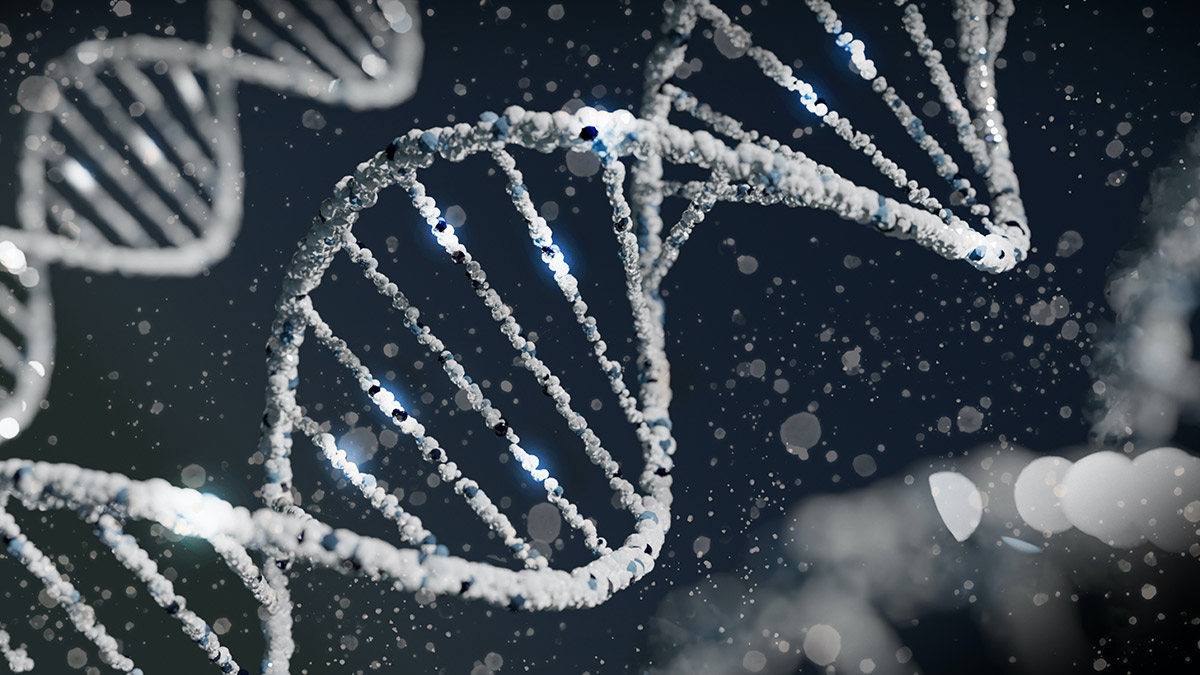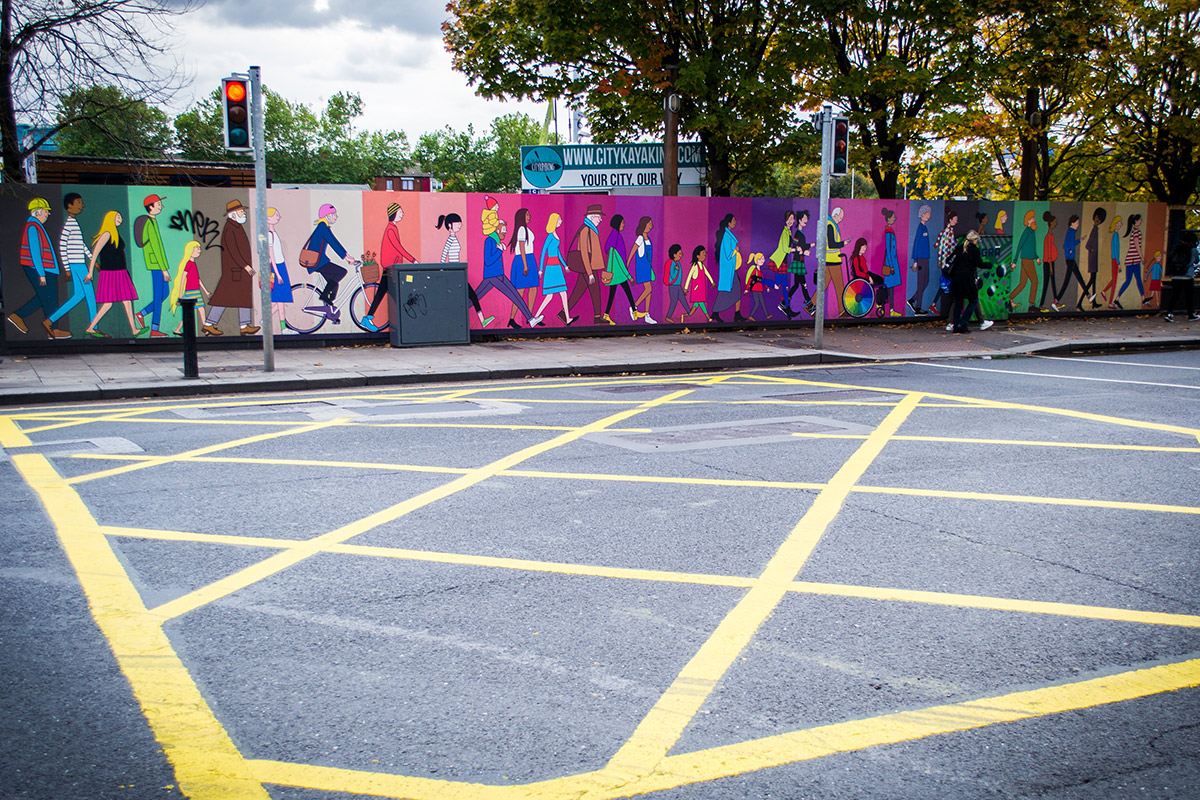The philosophy of asking questions about autism encompasses a broad range of perspectives and approaches aimed at deepening our understanding of this complex neurological condition. Autism is characterised by differences in social communication, sensory processing, and repetitive or restricted patterns of behaviour. As society has become more aware of autism and its impact on individuals and their families, asking questions has become an essential tool for unlocking knowledge and promoting inclusivity.
At its core, asking questions about autism recognises that every autistic person is unique, with their own strengths, challenges, and experiences. It encourages an open-minded and curious approach, fostering an environment where questions are asked not only to gather information but also to challenge assumptions and overcome stereotypes.
Asking questions about autism serves several important purposes. It helps researchers and professionals delve deeper into the underlying causes, mechanisms, and potential treatments for autism. It allows educators and therapists to tailor their approaches and interventions to meet the specific needs of autistic individuals. Furthermore, it enables parents, caregivers, and communities to better support and empower autistic individuals.
Philosophy Through Autism
This philosophy acknowledges that asking questions should be approached with sensitivity and respect. It recognises that autistic individuals are experts in their own experiences and advocates for their inclusion in conversations about autism research, policy-making, and support systems. By actively listening to autistic voices, we can gain valuable insights that challenge conventional wisdom and contribute to a more comprehensive understanding of autism.
Here are some interesting questions about autism that can spark discussions and promote a deeper understanding of the topic:
1. What are some common misconceptions or myths about autism that you would like to address?
- Autism is caused by vaccines: This is perhaps one of the most persistent and harmful myths about autism. Numerous scientific studies have consistently shown that there is no link between vaccines and autism. The original study that claimed such a link has been thoroughly discredited and retracted.
- Autism is a result of bad parenting or upbringing: Autism is not caused by negligent parenting or any specific parenting style. It is a neurodevelopmental condition that has a strong genetic basis. While parenting strategies can support individuals with autism, they do not cause the condition.
- All individuals with autism have extraordinary talents: While some individuals with autism may have exceptional skills or talents in certain areas, such as mathematics or art, this is not true for everyone on the autism spectrum. Autism is a diverse condition, and each individual’s abilities and strengths vary widely.
- Autism can be cured or outgrown: Autism is a lifelong condition. However, with early intervention, appropriate support, and therapies, individuals with autism can develop skills and strategies to navigate their daily lives more effectively. It is important to focus on acceptance, inclusion, and providing the necessary support for individuals with autism rather than seeking a cure.
- People with autism lack empathy: This is a common stereotype that is entirely false. Individuals with autism may have difficulty expressing or understanding emotions in the same way as neurotypical individuals, but they are fully capable of experiencing and showing empathy.
- Autism is more prevalent now than in the past: The increase in autism diagnoses over the past few decades can largely be attributed to increased awareness, improved diagnostic criteria, and better access to healthcare services. It does not necessarily mean that the actual prevalence has increased significantly.
It is important to dispel these misconceptions and promote accurate information about autism to foster understanding, acceptance, and support for individuals on the autism spectrum.

2. How does autism manifest differently in individuas?
Autism encompasses a wide range of characteristics, strengths, and challenges that can vary from person to person. While there are commonalities among individuals on the autism spectrum, each person’s experience of autism is unique. Here are some ways in which autism can manifest differently in individuals across the spectrum:
- Social interaction: Some individuals with autism may have difficulties with social interaction and communication. They may struggle with making eye contact, interpreting nonverbal cues, understanding social norms, and engaging in reciprocal conversations. On the other hand, some individuals with autism may develop strong social connections and have good social skills, although they may still face challenges in certain areas.
- Sensory sensitivities: Many individuals with autism experience sensory sensitivities, where they may be hypersensitive or hypersensitive to certain sensory stimuli. For example, they may be overwhelmed by loud noises, bright lights, certain textures, or strong smells. Others may seek out sensory stimulation or engage in repetitive behaviours (stimming) to regulate their sensory experiences.
- Communication: Some individuals with autism may have significant challenges with spoken language and may rely on alternative means of communication, such as gestures, sign language, or augmentative and alternative communication (AAC) devices. Others may have advanced language skills and a large vocabulary but struggle with pragmatics (the social use of language) or understanding and using figurative language.
- Interests and routines: Many individuals with autism have intense interests in specific topics or activities. These interests can be highly focused and provide a source of motivation and enjoyment. Some individuals may also rely on routines and sameness to feel a sense of stability and control.
- Cognitive abilities: Autism does not directly correlate with intellectual disability. While some individuals with autism have intellectual disabilities, others have average or above-average intelligence. It is important to recognise and support the unique cognitive abilities of individuals with autism.
- Executive functioning: Difficulties with executive functioning skills, such as planning, organising, and managing time, can be common among individuals with autism. However, the degree of impairment can vary significantly. Some individuals may require support in these areas, while others may excel in certain aspects of executive functioning.
These are general observations, and each individual’s experience with autism will be influenced by their unique combination of strengths, challenges, and individual characteristics. Emphasising person-centred approaches and recognising the diversity within the autism spectrum is crucial for understanding and supporting individuals with autism.

3. What are some strengths and talents often associated with individuals on the autism spectrum?
Individuals on the autism spectrum often possess a wide range of strengths and talents. While these strengths can vary from person to person, here are some areas in which individuals with autism may excel:
- Attention to detail: Many individuals with autism have exceptional attention to detail and a heightened ability to focus on specific tasks or subjects. This attention to detail can be advantageous in various fields such as science, mathematics, engineering, programming, art, and design.
- Pattern recognition: People with autism often have a strong ability to recognise patterns and make connections that others may overlook. This skill can be beneficial in problem-solving, analysing complex systems, identifying trends, and recognising patterns in data.
- Memory: Some individuals with autism have excellent memory skills, especially when it comes to recalling specific facts, details, or information from past experiences. This can be advantageous in academic pursuits or specialised fields where accurate recall is essential.
- Visual thinking and spatial skills: Many individuals with autism possess strong visual thinking abilities and excel in tasks that involve spatial reasoning. They may have a keen eye for detail, excellent visual memory, and the ability to think in pictures, which can be beneficial in artistic endeavours, architecture, engineering, or design.
- Logical and analytical thinking: Individuals with autism often exhibit logical and analytical thinking skills. They may excel in tasks that require logical reasoning, problem-solving, and attention to logical consistency. This can be advantageous in fields such as mathematics, computer programming, research, and engineering.
- Creativity: While creativity is not exclusive to individuals with autism, many individuals on the spectrum demonstrate unique and imaginative thinking. They may approach problems from unconventional angles, think outside the box, and come up with novel ideas or solutions.
These strengths are generalisations, and not all individuals with autism will possess them to the same degree. Each person on the spectrum is unique, and their strengths and talents will vary. Recognising and nurturing these strengths can help individuals with autism thrive and contribute their unique abilities to various domains.

4. How does sensory processing affect individuals with autism, and what are some strategies for managing sensory sensitivities?
Sensory processing refers to the way individuals perceive and respond to sensory information from the environment. Many individuals with autism experience sensory sensitivities, which means they may be hyper or hypo-sensitive to sensory stimuli. Sensory sensitivities can affect any of the senses, including sight, hearing, touch, taste, and smell. Here’s how sensory processing affects individuals with autism and some strategies for managing sensory sensitivities:
Hypersensitivity
Some individuals with autism are hypersensitive to certain sensory stimuli. For example, they may find loud noises, bright lights, strong smells, certain textures, or crowded spaces overwhelming and distressing. In such cases, strategies for managing hypersensitivity include:
- Providing a calm and quiet environment: Creating a calm and predictable environment with reduced sensory stimulation can help individuals with hypersensitivity feel more comfortable and regulated.
- Using ear defenders or headphones: Wearing ear defenders or headphones can help reduce noise sensitivity in loud or crowded environments.
- Using visual supports: Visual supports such as visual schedules, timers, or cues can provide predictability and reduce anxiety.
- Offering sensory breaks: Providing designated spaces or breaks where individuals can retreat to a quiet and soothing environment can help them regulate sensory input.
Hyposensitivity
On the other hand, some individuals with autism may be hypersensitive and have a reduced sensitivity to certain sensory stimuli. They may seek out intense sensory experiences or engage in self-stimulatory behaviours (stimming) to regulate their sensory input. Strategies for managing hyposensitivity include:
- Providing sensory input: Offering opportunities for individuals to engage in sensory activities or providing sensory tools (e.g., fidget toys) can help regulate sensory input and promote attention and focus.
- Sensory integration therapy: Working with an occupational therapist trained in sensory integration techniques can help individuals with hyposensitivity develop appropriate responses to sensory input.
- Gradual exposure: Gradually introducing new sensory experiences or stimuli in a controlled and supportive manner can help individuals adjust to sensory input they may find challenging.
Individualised Approaches
Sensory sensitivities can vary greatly among individuals with autism. Therefore, it is crucial to adopt an individualised approach and work closely with the person to understand their specific sensory needs and preferences. Regular communication, observation, and feedback from the individual can help identify strategies that work best for them.
Moreover, managing sensory sensitivities is a collaborative process that involves understanding and respecting an individual’s unique sensory experiences, providing appropriate support, and creating an inclusive environment that accommodates their sensory needs. Consulting with professionals, such as occupational therapists or autism specialists, can provide further guidance and support in managing sensory sensitivities effectively.

5. Can you share any personal stories or experiences highlighting the unique perspectives and abilities of individuals with autism?
- Temple Grandin, a prominent autism advocate, author, and professor, has shared her experiences of living with autism. She has a remarkable ability to think in pictures, which has greatly influenced her work in animal science and animal welfare. Her insights have revolutionised the livestock industry, and she has become an influential voice in promoting understanding and acceptance of autism.
- Stephen Wiltshire is an autistic artist who possesses an extraordinary talent for drawing detailed and accurate cityscapes from memory. His ability to capture intricate architectural details after a single helicopter rides over a city has astounded many. Stephen’s talent showcases the unique visual thinking abilities and attention to detail that individuals with autism can possess.
- Derek Paravicini is a British musician who was born prematurely and diagnosed with severe autism and learning disabilities. Despite his challenges, he has an incredible musical talent. Derek is a piano prodigy with perfect pitch and the ability to play complex pieces of music after hearing them only once. His story highlights the exceptional abilities that can be present in individuals with autism.
- Carly Fleischmann is a nonverbal individual with autism who communicates using a keyboard. She has gained attention for her powerful and insightful writings, sharing her experiences and perspectives on autism. Carly’s story illustrates the importance of finding alternative communication methods and the valuable insights individuals with autism can offer when given the means to express themselves.
These examples demonstrate the diverse talents and unique perspectives individuals with autism can bring to various domains. It’s important to recognise and celebrate the strengths and abilities of individuals on the autism spectrum, as they contribute their own distinct perspectives and talents to the world.
6. What are some promising areas of research or advancements in understanding autism that is intriguing?
There are several promising areas of research and advancements in understanding autism that are intriguing and hold the potential for improving our understanding and support for individuals on the autism spectrum. Here are a few notable areas:
- Genetics and Epigenetics: Researchers are making significant strides in uncovering the genetic and epigenetic factors that contribute to autism. Studying the genetic variations and mutations associated with autism can provide valuable insights into its underlying causes, potential biomarkers, and personalised treatment approaches.
- Brain Imaging and Connectivity: Advances in neuroimaging techniques, such as functional magnetic resonance imaging (fMRI) and diffusion tensor imaging (DTI), are allowing researchers to examine the structure and connectivity of the brain in individuals with autism. These studies are enhancing our understanding of how brain networks differ in individuals with autism, potentially leading to targeted interventions and therapies.
- Early Detection and Intervention: Recognising the importance of early intervention, researchers are focusing on developing reliable and accessible tools for early detection of autism. Identifying behavioural and physiological markers in infancy and early childhood can enable earlier interventions, leading to improved outcomes for children with autism.
- Personalised Interventions and Support: There is growing recognition that autism is a highly heterogeneous condition, and interventions need to be tailored to individual needs. Researchers are exploring personalised approaches that consider an individual’s unique characteristics, strengths, challenges, and sensory profiles. This individualised approach has the potential to improve outcomes and quality of life for individuals with autism.
- Technology and Assistive Devices: Technology has the potential to play a significant role in supporting individuals with autism. Researchers are developing innovative technologies and assistive devices, including apps, virtual reality, wearable sensors, and social robots, to enhance communication, social skills, and daily functioning for individuals on the spectrum.
- Co-occurring Conditions and Mental Health: Research is focusing on understanding the high prevalence of co-occurring conditions, such as anxiety, depression, ADHD, and sleep disorders, in individuals with autism. Examining the relationship between autism and these conditions can inform better interventions and support for individuals with comorbidities.
These are just a few areas of research that show promise in advancing our understanding of autism. As research progresses, it is likely that we will gain further insights into the causes, underlying mechanisms, and effective interventions for autism, leading to improved support and outcomes for individuals on the spectrum.

7. How can society become more inclusive and supportive of individuals with autism?
Creating a more inclusive and supportive society for individuals with autism requires collective effort and understanding. Here are some key ways in which society can become more inclusive and supportive:
- Education and Awareness: Promoting education and raising awareness about autism is crucial. This can help dispel misconceptions, reduce stigma, and foster a more understanding and accepting society. Educational initiatives can target schools, workplaces, and communities to provide accurate information about autism and promote inclusive practices.
- Sensory-Friendly Environments: Creating sensory-friendly environments can make a significant difference for individuals with autism. This involves minimising sensory overload by reducing loud noises, bright lights, and overwhelming stimuli in public spaces, schools, and workplaces. Providing quiet areas or sensory-friendly options can also help individuals regulate their sensory experiences.
- Accessible Communication: Society can work towards improving communication accessibility for individuals with autism. This includes providing alternative communication methods, such as visual supports, augmentative and alternative communication (AAC) devices, or assistive technologies. Promoting clear and direct communication strategies and offering patience and understanding in communication interactions can greatly support individuals with autism.
- Inclusive Education and Employment: Ensuring inclusive education environments is important for the development and success of individuals with autism. This involves providing appropriate support and accommodations to help them thrive academically, socially, and emotionally. Similarly, promoting inclusive employment practices that value neurodiversity, provide reasonable accommodations, and offer supportive environments can help individuals with autism find meaningful employment opportunities.
- Support Services and Programs: Society should invest in and expand access to support services and programs for individuals with autism and their families. This includes early intervention services, therapeutic interventions, vocational training, social skills programs, and community support networks. Expanding resources and reducing barriers to access can greatly enhance the quality of life and opportunities for individuals with autism.
- Advocacy and Inclusion in Decision-Making: Ensuring that individuals with autism have a voice in decision-making processes is essential. Including individuals with autism and their families in discussions, policies, and decisions related to their well-being and inclusion can help foster a sense of empowerment, and self-advocacy, and promote person-centred approaches.
- Acceptance and Respect: Ultimately, fostering a society that embraces acceptance and respect for individuals with autism is paramount. This involves challenging stereotypes, avoiding stigmatising language, embracing neurodiversity, and celebrating the unique strengths and talents of individuals on the autism spectrum.
By implementing these strategies and promoting inclusive attitudes and practices, society can create an environment where individuals with autism are valued, supported, and provided with equal opportunities to participate and contribute to their fullest potential.
8. Are there any cultural or gender-related considerations regarding autism diagnosis and support?
There are cultural and gender-related considerations regarding autism diagnosis and support. Here are some key points to consider:
Cultural Considerations
- Cultural perceptions and beliefs about autism: Different cultures may have varying beliefs, attitudes, and interpretations of autism. It’s important to understand and respect cultural perspectives to ensure appropriate diagnosis, support, and intervention.
- Language and communication: Language barriers and cultural differences in communication styles may impact the assessment and diagnosis process. Cultural and linguistic adaptations should be considered to ensure accurate evaluations and effective communication with individuals and families.
- Help-seeking behaviour: Cultural norms, beliefs, and stigmas may influence help-seeking behaviour and attitudes towards seeking autism diagnosis and support. It’s important to provide culturally sensitive information and support to encourage individuals and families to seek help when needed.
- Community support and resources: Cultural communities may have their own support networks, community resources, or traditional practices that can be valuable in providing support and intervention for individuals with autism. Collaborating with community leaders and organisations can enhance culturally appropriate support systems.
Gender-related Considerations
- Diagnostic bias and criteria: Historically, diagnostic criteria for autism were primarily based on males, leading to underdiagnosis or misdiagnosis in females. Recognising and addressing gender differences in autism presentation is crucial for accurate diagnosis and appropriate support for all individuals.
- Masking and camouflaging: Females with autism may exhibit more subtle or socially acceptable autistic traits, leading to difficulties in diagnosis. They may develop coping strategies to mask or camouflage their challenges, which can result in delayed or missed diagnosis. Understanding and recognising these gender-specific manifestations is important.
- Social expectations and stereotypes: Societal expectations of gender roles and behaviours may impact the identification and acceptance of autism traits. Stereotypes about gendered interests, social skills, and communication patterns can influence how autism is perceived and diagnosed in different genders.
- Support and intervention: Tailoring support and intervention approach to address gender-specific challenges and strengths is important. Considering the unique social, emotional, and communication needs of individuals across genders can enhance the effectiveness of support programs.
It is essential for professionals and service providers to be culturally sensitive, aware of gender-related considerations, and adopt an intersectional approach when diagnosing and supporting individuals with autism. Respecting and valuing diverse cultural perspectives and addressing gender differences can lead to more accurate diagnoses, culturally appropriate support, and better outcomes for individuals on the autism spectrum.

9. What are some challenges that adolescents and adults with autism may face, and how can we better support their transition into adulthood?
Adolescents and adults with autism can face specific challenges as they transition into adulthood. Here are some common challenges they may encounter and ways to provide better support during this transition:
- Social and Communication Skills: Difficulties in social interactions and communication can persist into adulthood for individuals with autism. This can impact their ability to form and maintain relationships, seek employment, or participate in community activities. Supportive measures can include social skills training, communication strategies, and providing opportunities for social engagement and practice.
- Employment and Vocational Training: Many individuals with autism face challenges in finding and maintaining meaningful employment. Providing vocational training and job coaching tailored to their strengths and interests can enhance their chances of successful employment. Building partnerships with employers and promoting inclusive workplaces that value neurodiversity can create more opportunities for individuals with autism in the job market.
- Independent Living Skills: Learning and mastering independent living skills, such as managing finances, cooking, transportation, and personal care, can be challenging for individuals with autism. Offering training and support in these areas can help them develop the necessary skills for increased independence and self-sufficiency.
- Mental Health and Well-being: Adolescents and adults with autism may be at a higher risk of experiencing mental health issues, such as anxiety, depression, and stress. It is important to address their mental health needs through access to appropriate services, counselling, and therapy. Promoting self-care strategies and teaching coping skills can also contribute to their overall well-being.
- Legal and Financial Considerations: Understanding legal rights, navigating financial systems, and accessing available benefits and support services can be overwhelming for individuals with autism and their families. Providing guidance, resources, and assistance in accessing appropriate legal and financial support can alleviate some of the stress and challenges associated with these areas.
- Continuity of Support: Transitioning into adulthood can often mean a change in support systems and services. Maintaining continuity of support through clear transition plans, collaborations between service providers, and effective communication can help ensure a smooth transition and avoid gaps in services.
- Person-Centred Planning: Taking a person-centred approach is crucial in supporting individuals with autism during their transition into adulthood. Recognising and valuing their unique strengths, interests, and aspirations can guide the development of individualised plans and support services that align with their specific needs and goals.
- Family and Peer Support: Providing support and resources to families and establishing peer support networks can be beneficial during the transition into adulthood. Sharing experiences, and information, and connecting with others who have similar journeys can offer emotional support, guidance, and a sense of community.
By addressing these challenges and implementing comprehensive support systems that cater to the specific needs of individuals with autism during their transition into adulthood, we can better equip them to lead fulfilling and independent lives.

10. How can individuals without autism be allies and advocates for the autism community?
Individuals without autism can play a crucial role as allies and advocates for the autism community. Here are some ways to support and advocate for individuals with autism:
- Educate Yourself: Take the initiative to learn about autism, its characteristics, strengths, challenges, and the experiences of individuals on the autism spectrum. Seek information from reputable sources, read books, attend workshops, and engage with autistic individuals and their families to gain a better understanding.
- Promote Acceptance and Inclusion: Foster a culture of acceptance and inclusion in your community, workplace, and social circles. Challenge stereotypes and stigmas associated with autism. Encourage environments that value diversity and embrace neurodiversity, creating spaces where individuals with autism feel accepted and respected.
- Use Inclusive Language: Be mindful of the language you use when talking about autism. Avoid derogatory language and outdated terminology. Use person-first language that emphasises the individual rather than defining them solely by their diagnosis (e.g., “person with autism” rather than “autistic person”). Respect and honour the language preferences of individuals on the spectrum.
- Support Autism Organisations: Contribute to autism organisations that provide services, advocacy, and support to individuals and families affected by autism. Donate your time, skills, or resources to these organisations or participate in fundraising events to help improve their programs and initiatives.
- Amplify Voices: Share the stories, experiences, and perspectives of individuals with autism. Use your platform, whether it’s social media, community events, or conversations with others, to amplify autistic voices. Listen to their insights, promote their work, and advocate for their inclusion in decision-making processes.
- Foster Inclusive Spaces: Advocate for inclusive policies and practices in schools, workplaces, and public spaces. Encourage educators, employers, and community leaders to create inclusive environments that accommodate the needs of individuals with autism. Support initiatives that promote accessibility, reasonable accommodations, and equal opportunities for all.
- Practice Empathy and Understanding: Approach interactions with individuals with autism and their families with empathy, patience, and understanding. Recognise that everyone’s experiences are unique, and respect their individual perspectives and needs. Be open to learning from autistic individuals and valuing their contributions to conversations and decision-making processes.
- Be an Ally in Daily Interactions: Be an ally by supporting and including individuals with autism in social activities, advocating for their needs and preferences, and challenging discrimination or mistreatment when you witness it. Offer assistance or understanding when needed, and be willing to adapt and accommodate to create inclusive and accessible spaces.
By being an ally and advocate, individuals without autism can contribute to building a more inclusive and supportive society for individuals on the autism spectrum. Small actions and everyday interactions can make a significant difference in promoting understanding, acceptance, and equal opportunities for all.
These questions can serve as starting points for discussions, awareness campaigns, or educational initiatives about autism. Remember to approach these conversations with openness, respect, and a willingness to learn from the diverse perspectives and experiences of individuals with autism and their families.